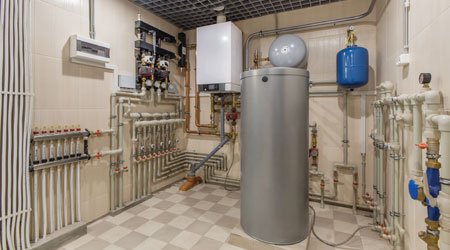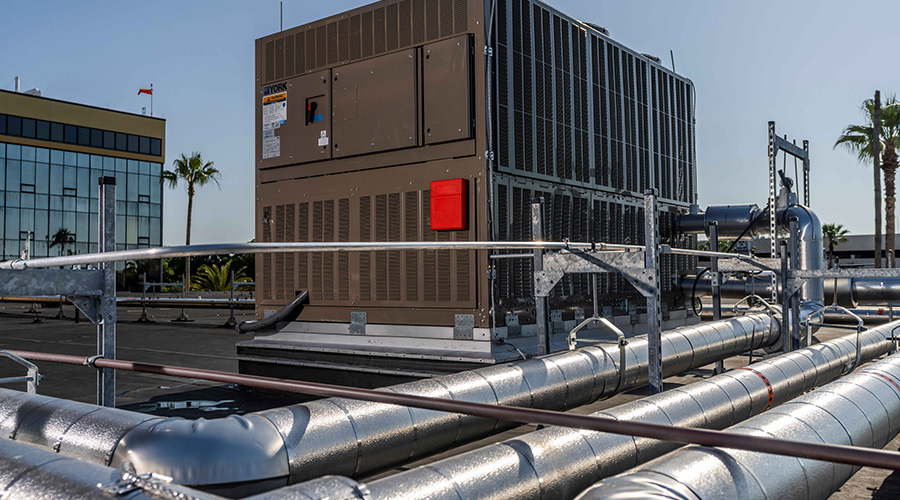Steps for Successful Boiler Selection
From evaluating piping to choosing boiler size, here's a "how to" on what you should consider when upgrading boilers
The first step in the evaluation process is identifying the amount of outside air existing AHUs require based on building use and occupancy. Replacement coils need to be operationally flexible, heating up the range of outside air quantities from minimum demand based outside to potentially 100 percent outside air. Managers need to consider these parameters when selecting replacement heating coils.
Heating-coil water velocity. When a heating coil is sized for a large capacity range, the coil velocity can drop below 1.5 feet per minute (fpm) at low capacities, potentially creating these issues:
- The flow could become laminar, impacting effective heat transfer.
- Fouling and scaling could increase.
- Risk of water freezing inside the pipe in AHUs with air stratification issues increases.
- Hot and cold spots on large coils could occur.
To minimize coil freezing risks associated with low heating-coil velocity, a dedicated circulation pump can maintain higher velocity through the coil, regardless of the hot-water flow allowed through the control valve. Some climates and applications also might warrant the use of a glycol mixture.
Airside pressure drop. Heating coils typically have low airside pressure drop in the range of 0.01-0.20 inches water gauge (in wg). Replacement coils with additional capacity might have higher airside pressure drops, but that should not have a dramatic impact on the overall system static pressure. If the existing supply fan cannot accommodate an additional static pressure imposed by the new heating coil, consider reviewing the ability to make concessions to the dirty filter allowance. As an example, the prefilters may be able to be replaced at 0.80 in wg in lieu of 1.0 in. wg.
Evaluating piping
The second key to upgrading an existing boiler is evaluating the existing piping system. Using existing hot-water piping is imperative because replacement is typically cost-prohibitive and invasive. At this point in the process, existing AHUs heating coils have been evaluated, and new loads have been determined. These new loads in conjunction with the existing pipe size will determine maximum allowable pipe flow rates to comply with energy codes and prevent noise and pipe erosion. Through the combination of flow and capacity, the system delta-T is determined.
Boiler size
Once managers have evaluated existing pipe sizes and selected new preheating coils, they can size the replacement boiler plant and establish overall parameters.
Obstacles that can occur when planning the boiler plant replacement include:
- footprint requirements for new equipment — boilers, pumps, expansion tanks, etc. — vs. existing equipment requirements
- electrical power requirements of the new boiler plant vs. existing equipment
- shutdown planning and logistics for removal and replacement.
Related Topics:














